This post is also available in:
 Français (French)
Français (French)

Nestled in the beautiful mountains of Guinea, West Africa is Simandou, the world’s largest untapped high-grade iron ore deposit, coveted by mining companies for decades. Simandou project developers including Winning Consortium Simandou (WCS) and Australian mining giant Rio Tinto – both backed by China’s largest steel maker, Baowu – are moving ahead quickly under intense pressure from the ruling military junta in Guinea to develop and start construction for the continent’s largest combined mining and infrastructure project. While the Simandou project is said to hold great promise of economic growth for this impoverished country under its third military regime, many significant human and environmental rights impacts have been documented since development started. In my work with The 11th Hour Project’s Human Rights program, we support several organizations to hold the government and project developers accountable and to demand compliance with their human and environmental rights obligations.
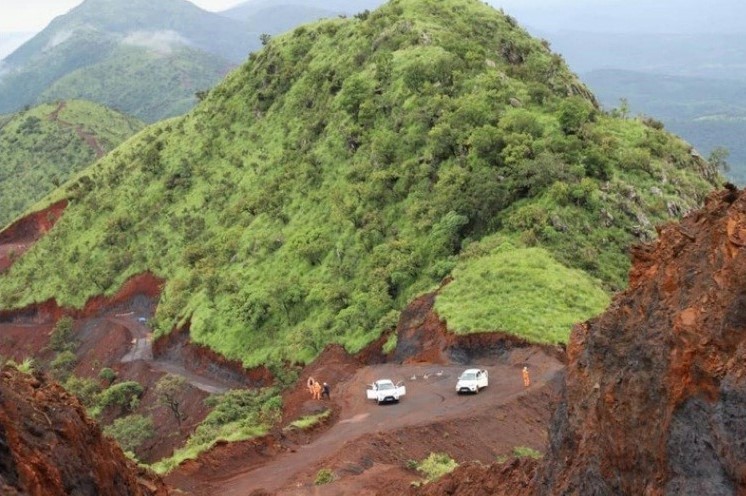
As part of this advocacy work, last month I accompanied a group of local community leaders impacted by the Simandou project corridor and staff from the NGO Action Mines Guinée on a learning exchange to Brazil. We visited Brazil’s key mining areas of Minas Gerais in the Southeast to learn about the devastating tailings dams failures and community organizing. We then headed north to Pará and Maranhão in the Amazon to participate in a regional meeting of communities impacted by mining. We witnessed first-hand the impacts of the Carajás railway corridor and its open-pit iron ore mines in beautiful protected areas, a massive rail line carrying ore and commodities and the epic challenges of resettling impacted villages.
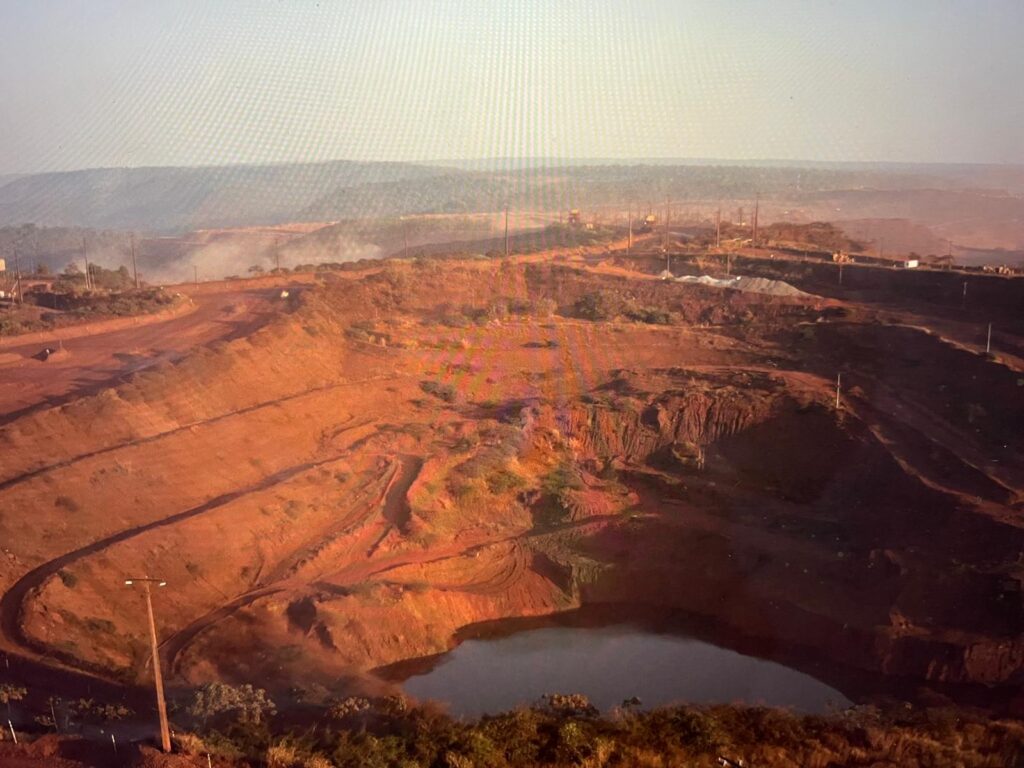
- Demanding accountability of Simandou project developers for their human rights impacts
Although the project only broke ground in early 2021, national and international organizations have already documented the devastating harms of the Simandou project at this early stage of its development on local communities’ precious water resources, biodiverse forests, agricultural lands and food security. Groups are also denouncing risks the project poses for the climate. With support from Action Mines Guinée, local monitoring committees in Simandou are documenting the wide gap between rhetoric and action by WCS and Rio Tinto when it comes to respect for community rights with unremediated damage to water resources, fisheries, agricultural lands, cracks in houses from blasting, dust and air pollution and more. These reports read like a “déjà vu” for one of the project developers WCS in Guinea: a bauxite mining project that was hastily developed in Boké — the country’s current mining epicenter — leaving widespread unremediated harms on local communities’ water, agricultural lands and livelihoods, as documented extensively in a 2018 Human Rights Watch report and a 2023 Natural Justice community audit.
Despite promises of local employment benefits from the Simandou construction projects, these opportunities have yet to materialize for the surrounding communities. Local protests demanding fair and equitable access to these jobs have been met with swift and violent repression by the military government. Most recently, on July 17, 2024 security forces used tear gas and live ammunition to quell demonstrations in Beyla, leaving three people dead and many more severely wounded, followed by arrests.
- Learning from local communities in Brazil about iron ore mining impacts and community organizing
High risks of mine waste (tailings) dams failures
Mining is effectively an exercise in creating and managing the mountains of overburden and waste (also called tailings) that must be moved to reach the high-value minerals or metals. In 2015, the massive collapse of tailings dams at the Samarco iron mine in Mariana, owned by Vale and BHP Billiton, killed 19 people. We walked through the ghost town of Bento Rodrigues, hearing from victims about the continued impunity of the company and resettlement benefits that have still failed to materialize.
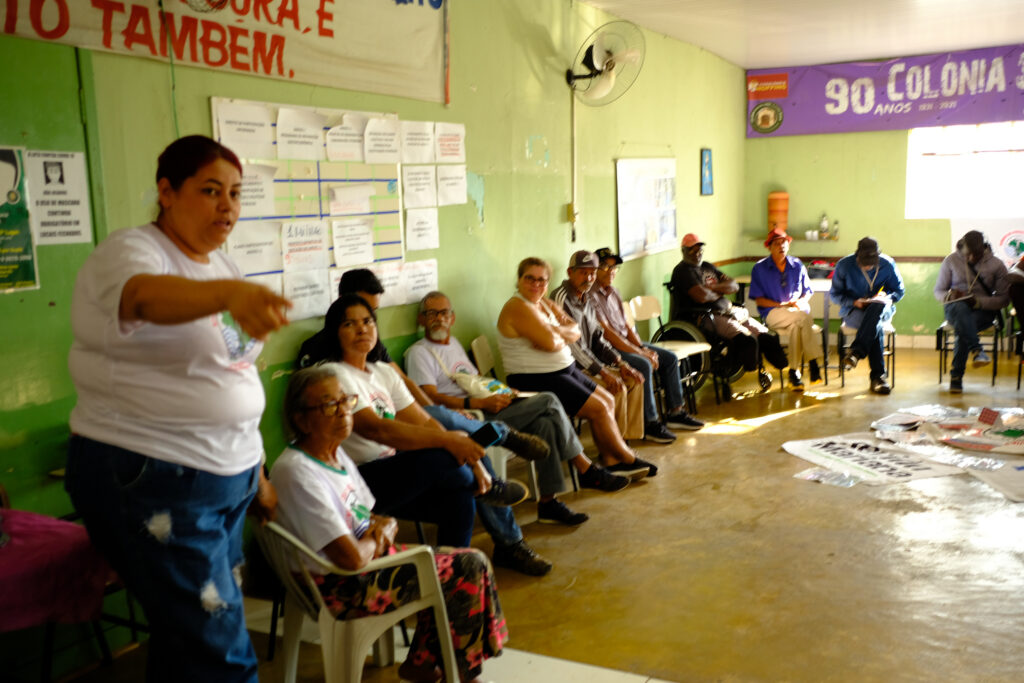
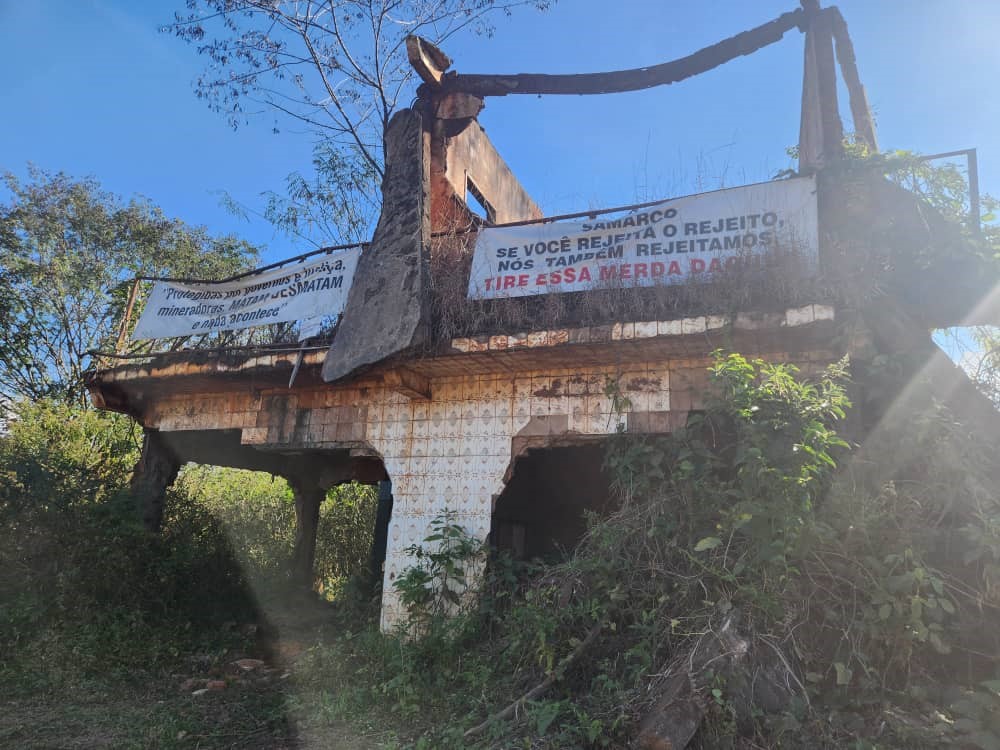
We also visited Brumadinho where in 2019, the collapse of the tailings dam at Vale’s mine claimed 272 lives, predominantly workers, and dumped nearly 10 million cubic meters of toxic mine tailings polluting the riverways and spreading devastation over a large territory. We listened to community members as they described their struggle to rebuild their lives with meager remedies from the companies.
We were also inspired by the prevailing women’s leadership in communities and within the social movement Movimento dos Atingidos por Barragens (MAB). We were especially moved by their successful campaign to make urgent aid payments directly to women, rather than to men “on behalf of women and children’. This resulted not only in far greater food security and socio-economic stability in disaster-affected communities, but this ad hoc initiative was formalized as public policy. Aid payments must now be made to individuals directly instead of only to the head of household.
Little information is available today in the public domain about tailings management in the Simandou project, and we left Minas Gerais with many questions for the project developers: questions about the type of mining technology to be used, to the particular type of wet or dry mine waste management, and disclosure of the tailings dam break studies. For example, in the thousands of pages in the WCS environmental and social impact assessments (ESIAs) that our partners went to great lengths to obtain and comb through, only about three pages vaguely address tailings management without the requisite detail that global industry standards now require in the wake of the Mariana and Brumadinho dam failures. Our partners continue to comb through the Rio Tinto ESIAs that only recently, have become partially available to them. None of the Simandou ESIAs from WCS and Rio Tinto are available to the general public (whether in electronic format, on a website, or otherwise), and for those that have been obtained by local NGOs, key annexes are often not attached and not provided when requested.
Social movements, organizing and popular education
In the southeastern state of Minas Gerais, we were hosted by MAB to visit two sites that have experienced devastating tailings dam failures. We learned about MAB’s decentralized and non-hierarchical organizing strategies from the local to the national level and back down to the local, built on shared values and philosophy.
“A única luta que se perde, é aquela que se abandona.” (“The only fight you lose is the one you abandon.”) – Carlos Marighella, MST
From Minas Gerais, we flew to the northern Amazonian state of Pará, where we were hosted by the Comissão Pastoral da Terra (CPT) and Justiça nos Trilhos (JnT) to take part in the 13th annual Regional Meeting of People Affected by Mining in the Carajás Corridor, in Portuguese: Encontro Regional das Atingidas e dos Atingidos pela Mineração (ERAM). This meeting demonstrated the power of collective organizing bringing together around a hundred participants from various communities, including farmers, Afro-descendants and indigenous communities, with academics, youth and LGBTQ leaders, fisherfolk organizations, networks and social movements. Participants spoke of the violence of capitalism on lands, communities and women, and discussed collective strategies of popular education, resistance, no-go zones, the value of women’s leadership and the decades-long nature of the struggle.
During the ERAM, we visited one of the encampments central to the broad push for rural agricultural land reform led by Latin America’s largest social movement, the Movimento dos Trabalhadores Rurais Sem Terra (MST). An exceptional moment was the mística ceremony welcoming us to the country’s largest encampment, “Terra e Liberdade” with 7,000 families most in a situation of extreme poverty squatting since November 20, 2023 (Black Awareness Day) in a rural, exceptionally rich territory in Pará with mining activities about 30 km away in all directions. The poems, songs and ceremony celebrating land, tools, seeds, education and children shared a powerful message of solidarity and a positive collective vision for a better future by those who have been brutalized and harmed by the prevailing capitalist-industrial complex.
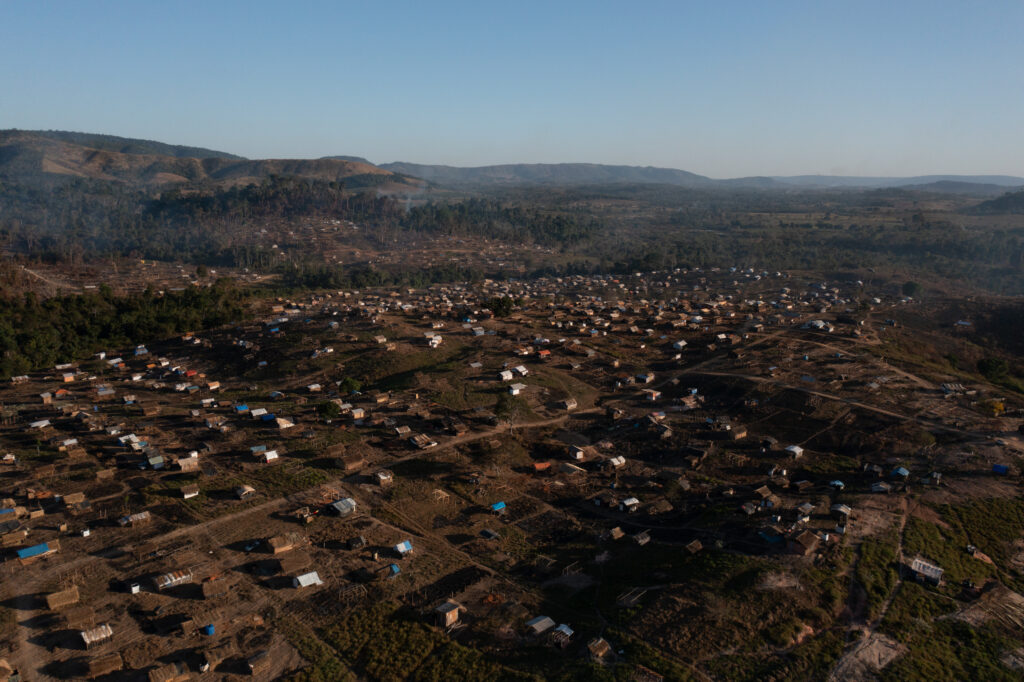
National forests, multi-use railroads and energy infrastructure benefiting corporate elite, not ordinary people
On our last day in Pará, we visited Vale’s iron ore mining pits operating deep in the Carajás National Forest. The operation has expropriated indigenous communities such as the Xikrin with little to no remediation. Today the company closely controls access to the National Forest and requires approved visitors to have a guide accompanying them in order to limit their movements. The visit demonstrated how, yet again, corporate interests prevail over environmental and biodiversity protection, and the lives and well-being of traditional and indigenous communities.
In neighboring Maranhão state, we saw the railroads used to transport ore and commodities such as soy from the interior to the deepwater port at São Luís. Said to be “multi-use”, the railroad transports ore and commodities every 8 minutes, 24 hours a day, and has passenger trains only three times per week. Communities living along the rail corridor endure constant loud noise from the trains passing, the vibrations affecting their bodies and homes, and safety risks for people and animals crossing the tracks. Finally, the energy infrastructure powering the steel industry includes blast furnaces, power plants and cement plants primarily benefits industry, leaving households to pay some of the highest prices for electricity in the country.
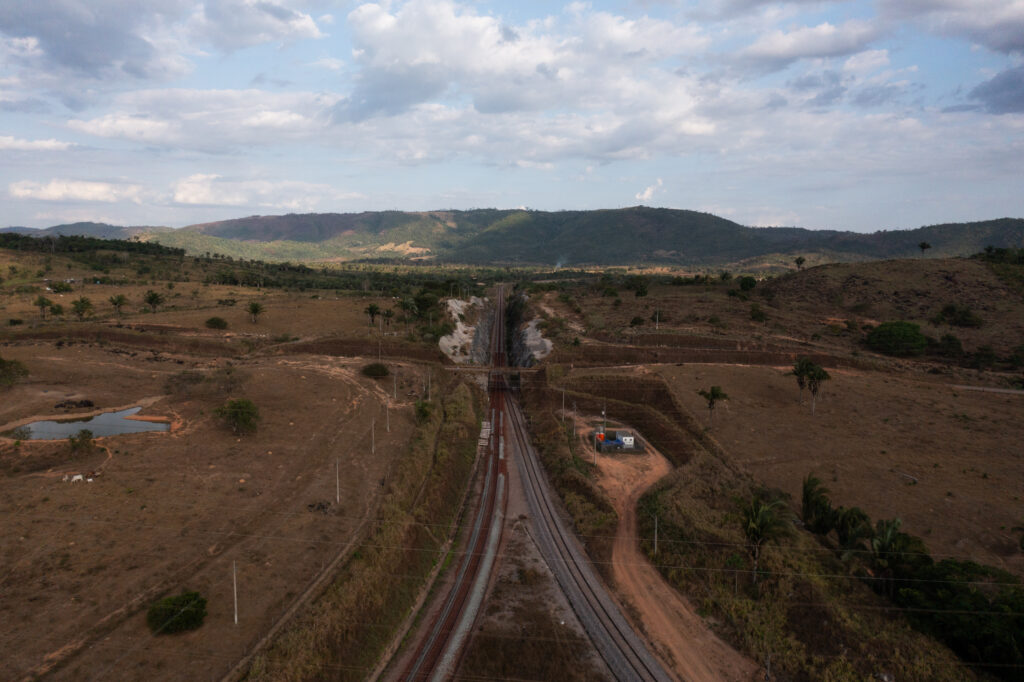
On the last days, we visited the community of Piquiá de Baixo, located in the shadow of the steel industry, which has made the air and water quality toxic for humans there. The community has been demanding resettlement and twenty years later, the families have yet to receive the keys to their new homes at the resettlement site at Piquiá de Conquista.
- Onward with positive inspiration and solidarity
Our last day in São Paulo was spent filming exit interviews capturing the rich and deep lessons learned by the Guinea participants.
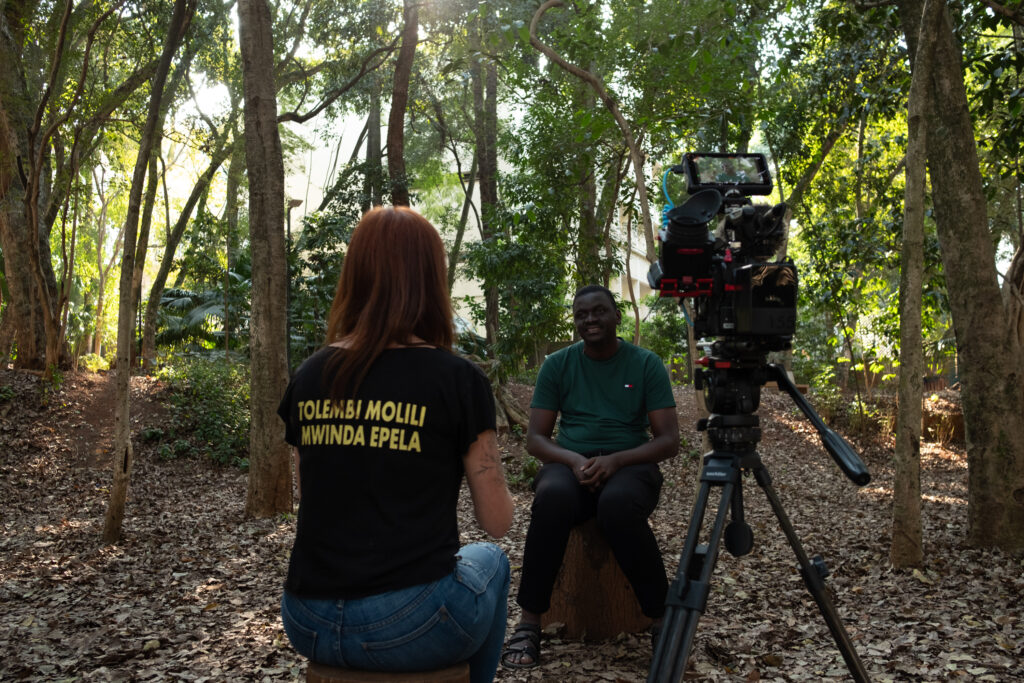
We heard positive and inspiring lessons on women’s leadership and economic empowerment, on decentralized collective organizing at many levels and centered on a shared set of values, made possible with popular education and community listening tools. And we heard warnings of the many broken promises of mining companies and elite capture of benefits, the dizzying cumulative negative impacts from rail, mining, energy and infrastructure projects, most especially the irreversible impacts of disasters such as tailings dam failures, destruction of national forests and biodiversity, traditional villages and indigenous cultural sites.
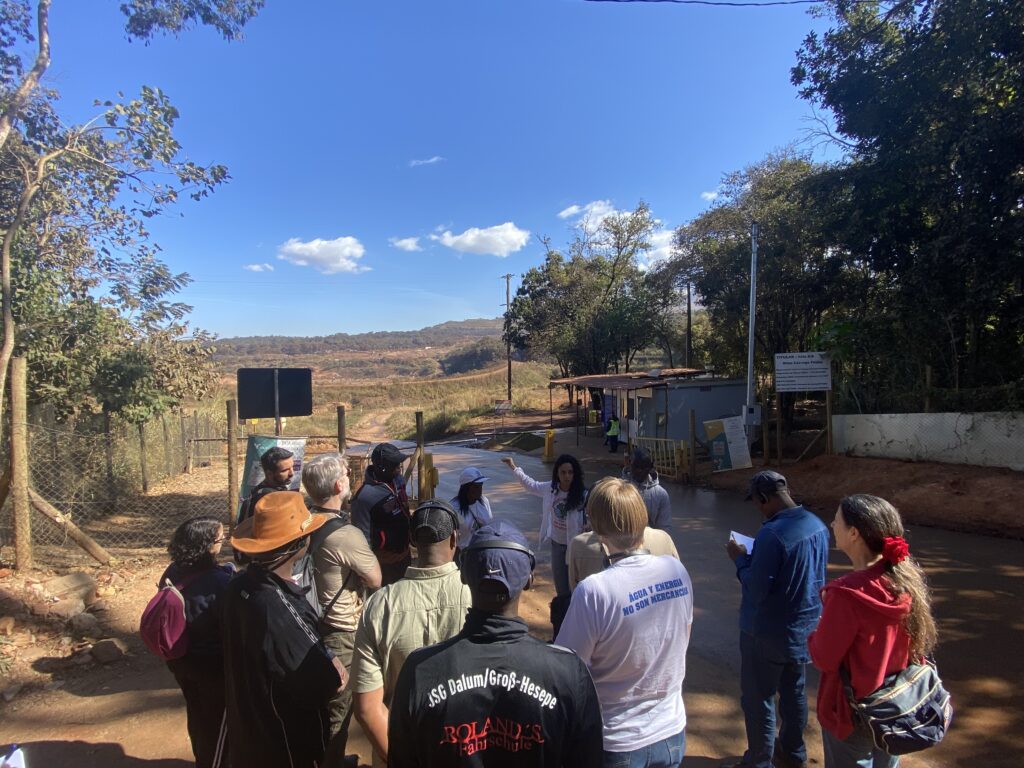

Filmmaker Tom Laffay accompanied us on the tour. We are working on a short documentary highlighting key lessons to share with communities and civil society in Guinea for broader uptake.
This learning exchange was made possible by funding from and facilitation by The 11th Hour Project. I’m grateful to SAGE Fund who introduced us to their local partners in Brazil, providing contacts with allied host organizations that made these exceptional experiences possible. Our duo of French-Portuguese interpreters made communication possible, and we all appreciated the infinite patience of our fixer to make sure everyone was comfortable. We also extend our thanks to the many others who provided us with advice on planning this exchange, including American Jewish World Service (AJWS), Ford Foundation, Earthworks, Environmental Defender Law Center (EDLC), Instituto Cordilheira and Grupo de Pesquisa e Extensão Política, Economia, Mineração Ambiente e Sociedade (PoEMAS).
